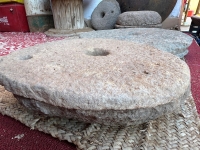
Ar-Raha (Handmill) is a primitive tool made of rough, heavy stone, consisting of two round stones placed one on top of the other, known as the stones of ar-Raha. Their diameter ranges from one to three ft, depending on the size of the tool. It was historically known in Saudi culture as one of the tools invented by humans to facilitate the grinding and crushing process for bread preparation. In the past, Saudi society relied on wheat and barley to prepare daily foods such as bread and Jarish. In...

The Audiobooks Cabins Project 'Masmooa' is a project featuring audio devices designed as phone booths, offering interactive audiobook content. It was launched by the Libraries Commission in the Kingdom of Saudi Arabia as part of the initiative to provide library services in public gathering spaces, one of the commission's strategic initiatives. The project's first phase was introduced in 2022, followed by its second phase the following year. Objectives of the Audiobooks Cabi...

The Cultural Capability Development Strategy is a comprehensive national strategy to align educational outcomes with labor market needs in the cultural sector within the Kingdom of Saudi Arabia . It focuses on integrating culture and arts into all stages of education, as well as technical and vocational training, and enhancing the educational environment to foster the growth of the cultural sector. The strategy was launched on December 15, 2022, by the Ministry of Culture and the Ministry of Ed...
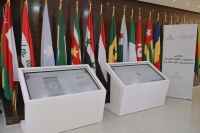
The Forum for Celebrating the Arabic Language for Islamic Nations is an event organized by the King Salman Global Academy for Arabic Language (KSAA) on February 2, 2023, in Jeddah City , west of the Kingdom of Saudi Arabia , in collaboration with the Organization of Islamic Cooperation (OIC). The forum aims to enhance the presence of the Arabic language and promote its use in regional and international events. Objectives of the Forum for Celebrating the Arabic Language for Islamic Nations The F...
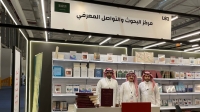
The Center for Research and Intercommunication Knowledge is an independent scientific research center established in January 2016 in Riyadh , the capital of the Kingdom of Saudi Arabia . This center specializes in international policies and affairs studies, foresight, cultural research, and interdisciplinary studies. The center offers training programs for Saudi youth in the fields of research and studies, equipping them with practical and academic skills. It also organizes conferences, worksho...
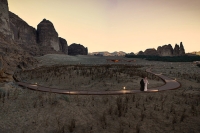
It is an initiative supervised by the Royal Commission for al-Ula , dedicated to developing and rehabilitating archaeological sites and natural and cultural oases in the governorate. The Journey Through Time Masterplan includes developing five cultural centers: Al-Ula Old Town Oasis, Hegra Archaeological City, Jabal Ikmah Oasis, Dadan Oasis, and the Nabataean Horizon Oasis, by 2035, aiming to make al-Ula a global cultural, heritage, and artistic destination. These five cultural centers embody t...
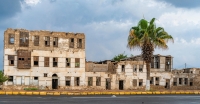
The Traditional Architecture in Tabuk Province represents the traditional building styles in Tabuk Province , located northwest of the Kingdom of Saudi Arabia . The styles vary according to the materials available in the surrounding environment, as well as social life and external cultural influences. Traditional architectural styles in Tabuk Province Tabuk Province encompasses various styles of traditional architecture, influenced by several factors, such as social conditions, external cultura...
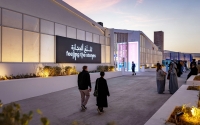
Jax District is located in ad-Dir'iyyah Govenorate, Riyadh Province . It was developed by the Saudi Ministry of Culture to serve as a supportive platform for local talents and a reference point for culture and arts. It hosts local and international exhibitions, as well as cultural and artistic activities throughout the year. Its renovation seeks to support national talents and cultural exchange, where it serves as an attraction site for artists from all the regions of the Kingdom of Saudi ...
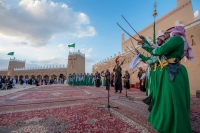
Saudi Ardah Exhibition is a cultural event dedicated to highlighting the cultural significance of the Saudi Ardah , a prominent heritage in the Kingdom of Saudi Arabia’s culture and a component of its intangible cultural heritage listed on UNESCO’s World Heritage List . The exhibition was organized by the Ministry of Culture in 2022, at al-Safat Square near al-Masmak Palace in Riyadh , the capital. Heritage arts at the Saudi Ardah Exhibition Over six days, the exhibition presented historica...
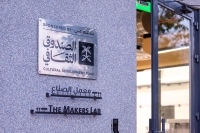
Do Tank is a workshop that provides an incubating space and environment for creators in the cultural sector of the Kingdom of Saudi Arabia, encouraging them to innovate in various fields of design and production. The lab aims to contribute to enhancing local production and manufacturing of cultural products, thereby improving the quality of outputs in the cultural sector. It was inaugurated on December 27, 2023, at al-Mashtal Creative Incubator in the Diplomatic Quarter of Riyadh City . Funding...
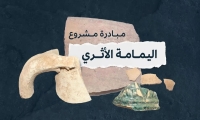
Al-Yamamah Archaeological Project is a research project launched by the Heritage Commission under the Ministry of Culture in the Kingdom of Saudi Arabia on September 1, 2024. The project aims to expand archaeological research within the scope of Riyadh City and its surrounding centers, located approximately one hundred km away. Objectives of al-Yamamah Archaeological Project Al-Yamamah Archaeological Project aims to enrich the National Antiquities Register, highlight the cultural significance a...
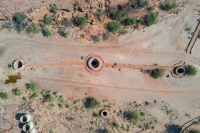
Saudi Sites on the UNESCO World Heritage List are culturally and historically significant locations that form part of the collective heritage of humanity, as outlined in the UNESCO Convention Concerning the Protection of World Cultural and Natural Heritage, which the Kingdom of Saudi Arabia ratified in 1978. Currently, eight Saudi sites are listed on the United Nations Educational, Scientific, and Cultural Organization (UNESCO) World Heritage List. The first was Hegra in 2008, with the late...